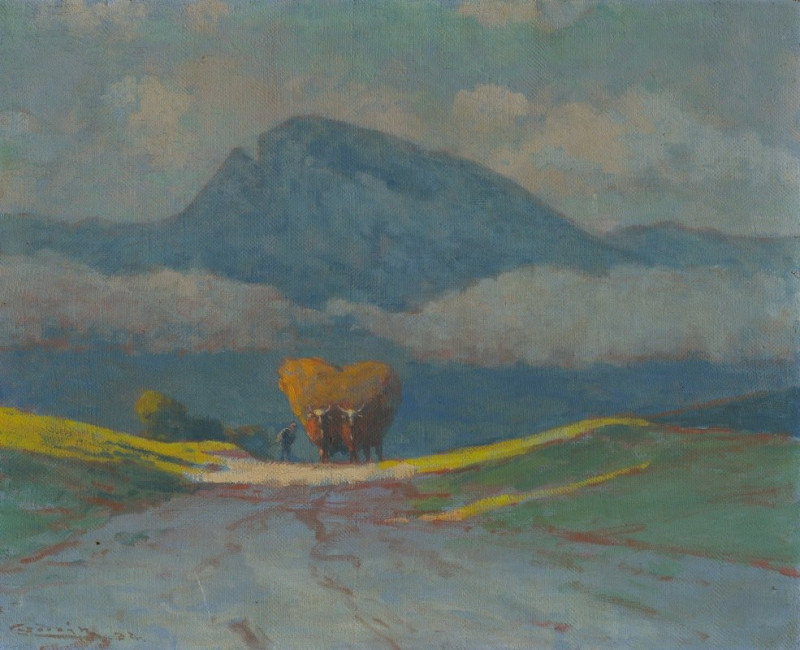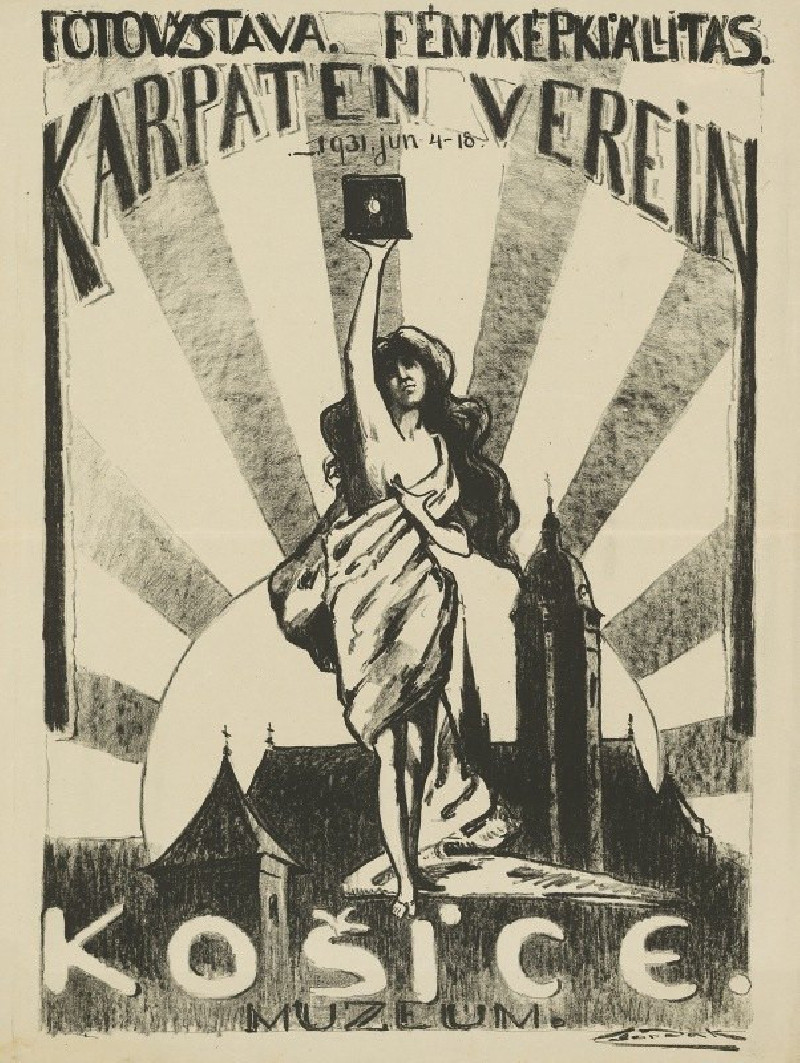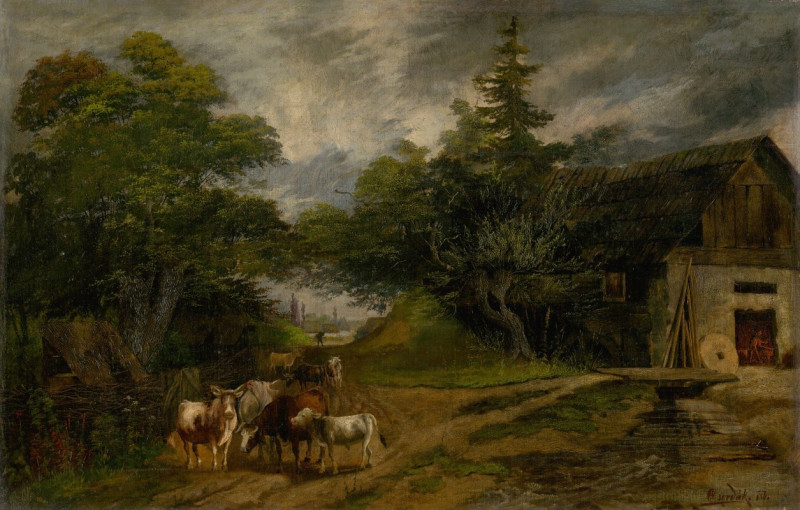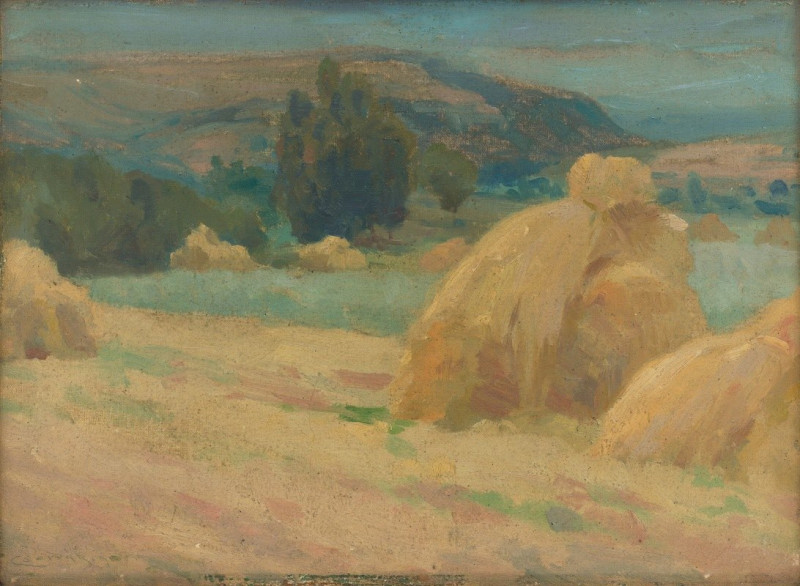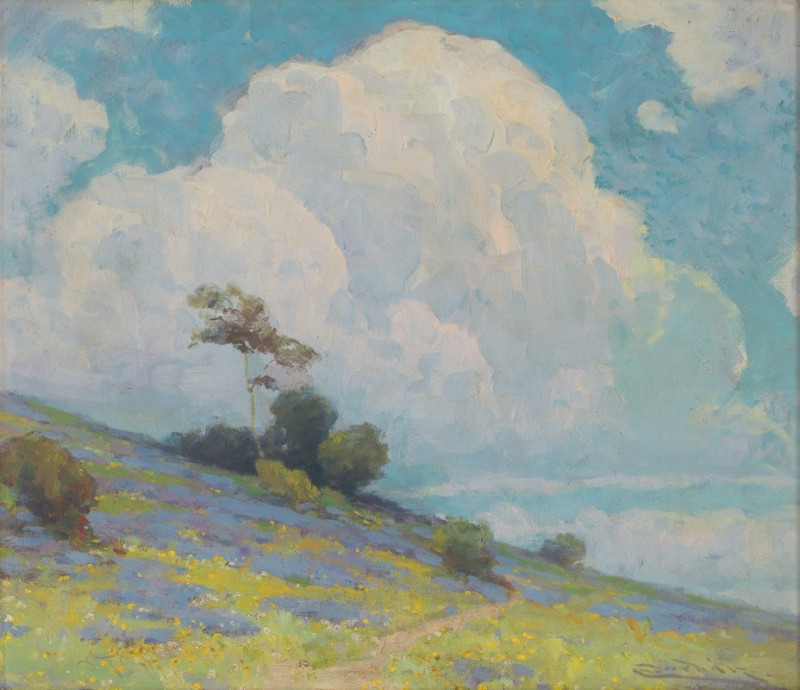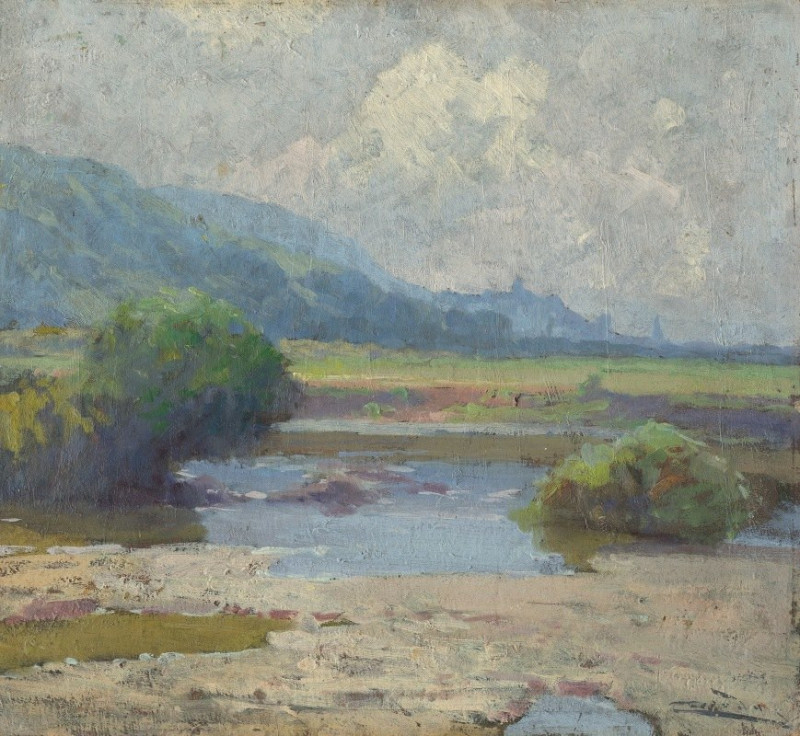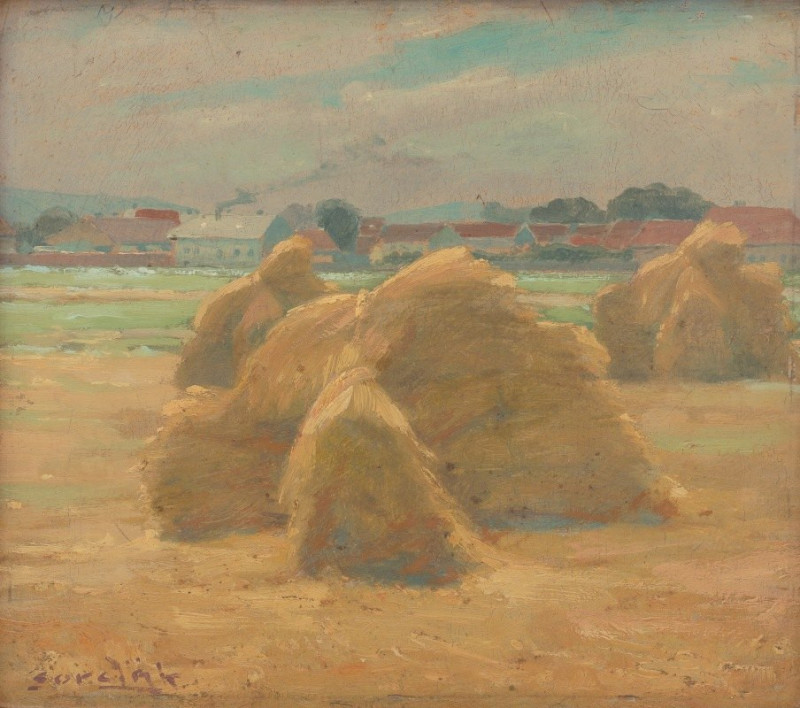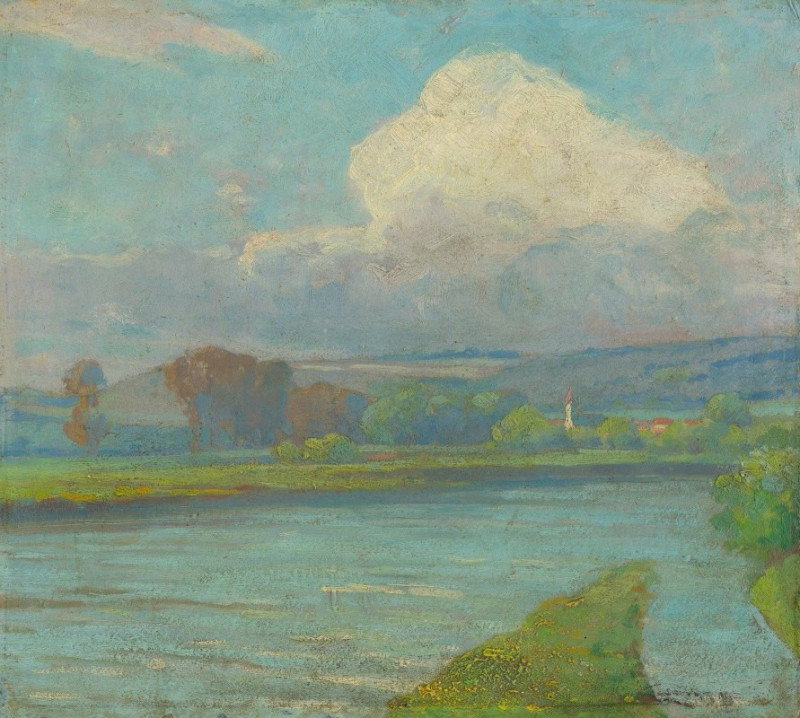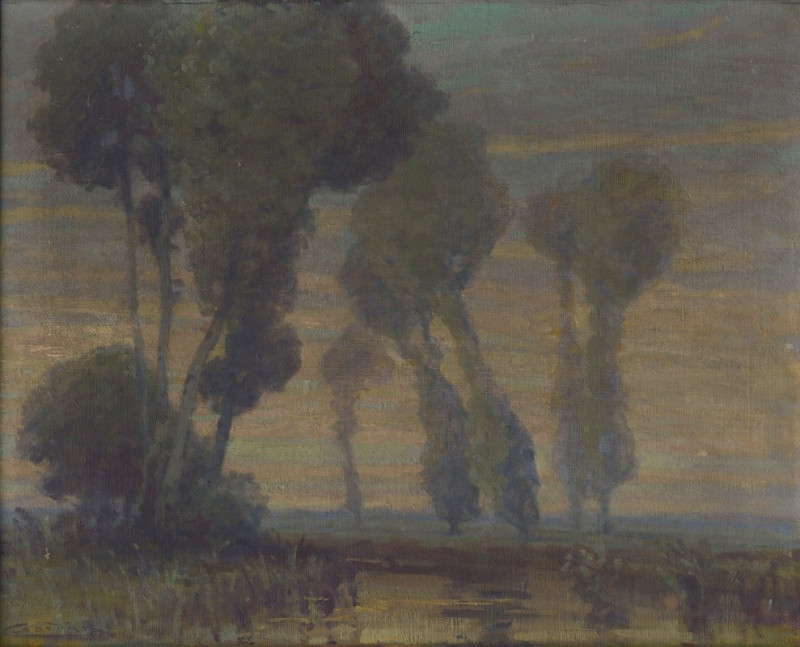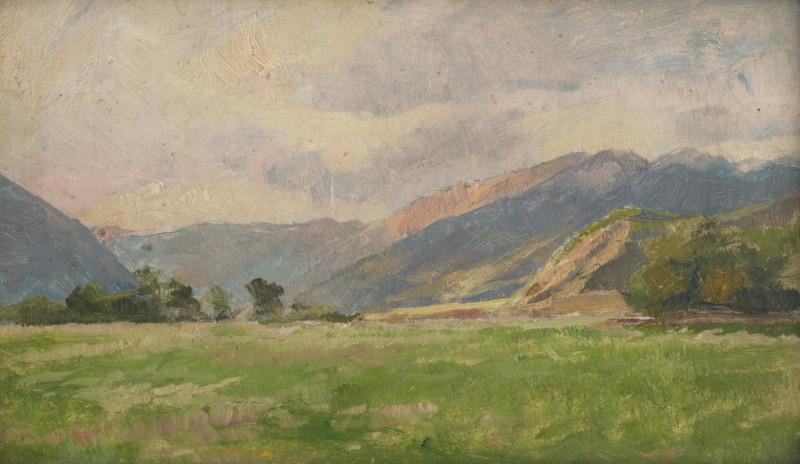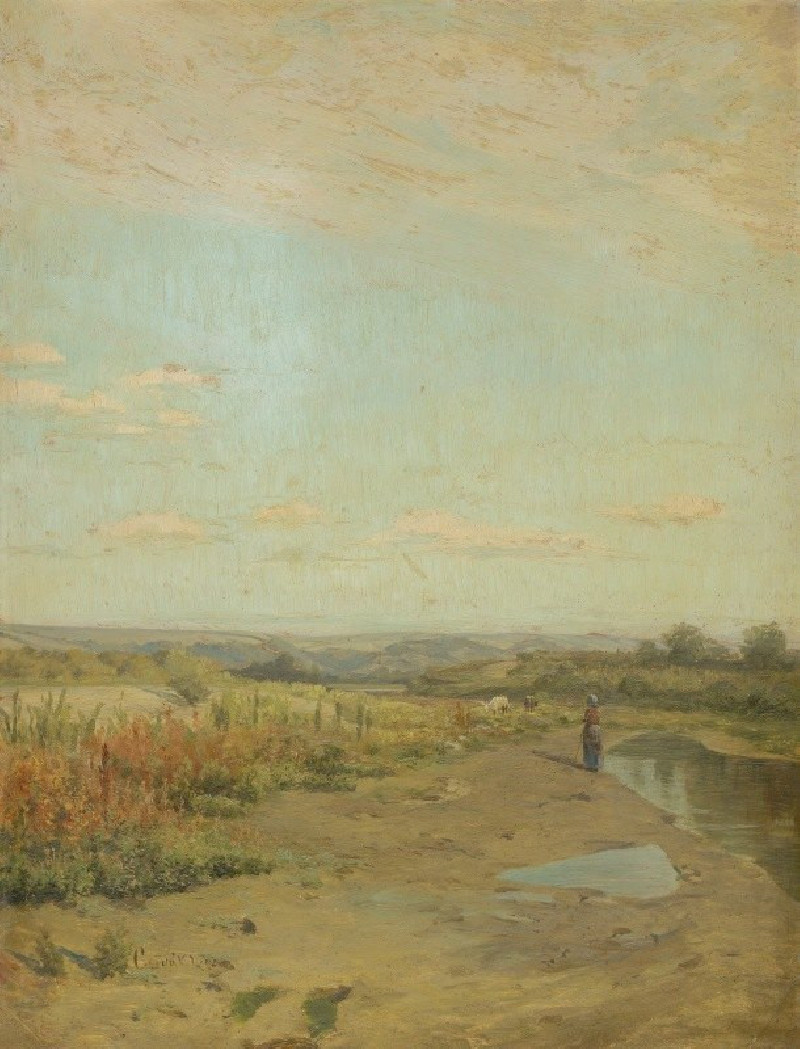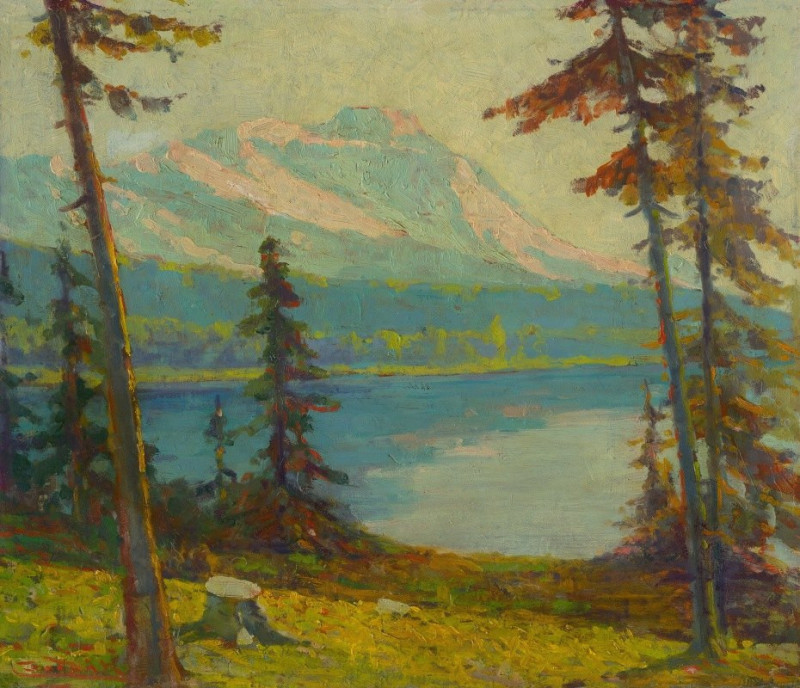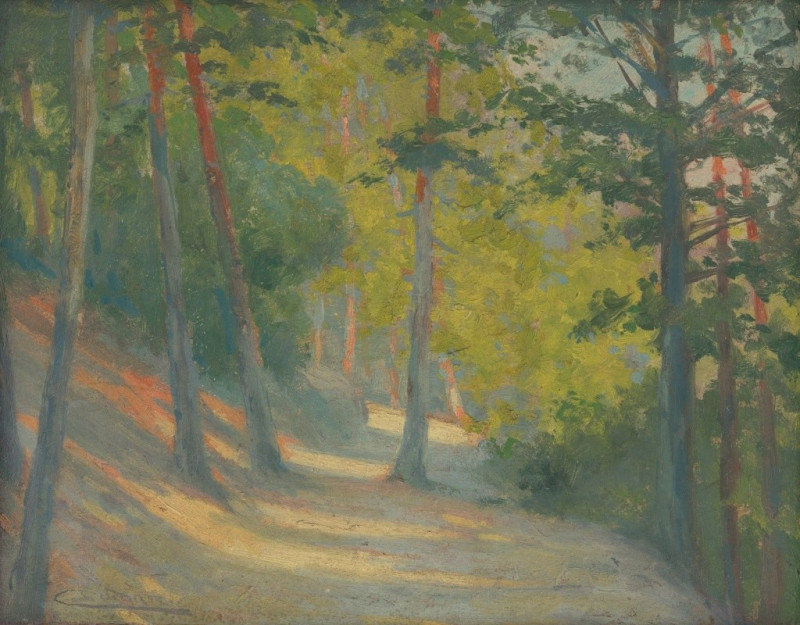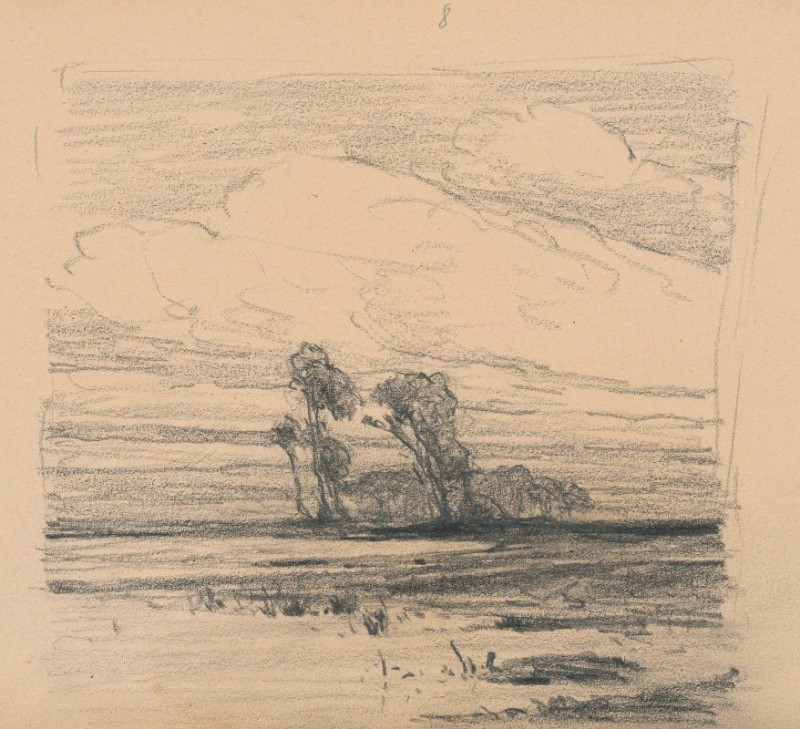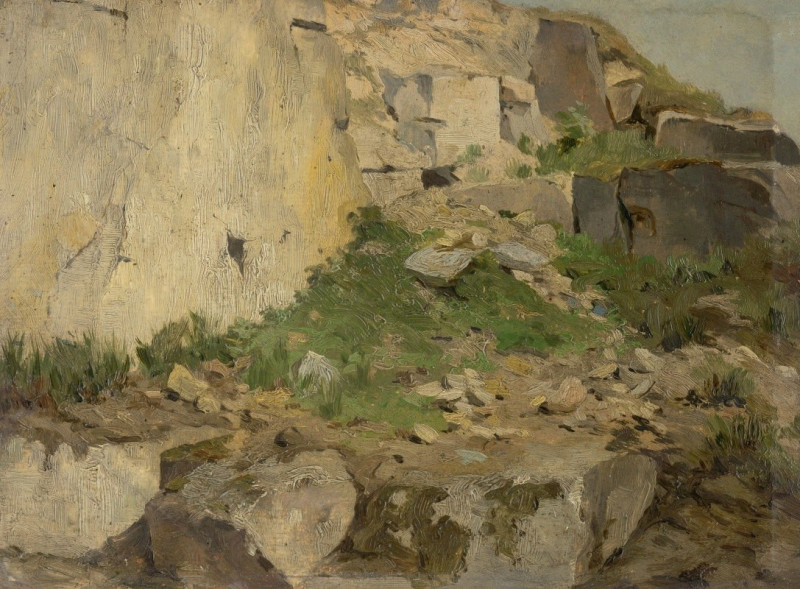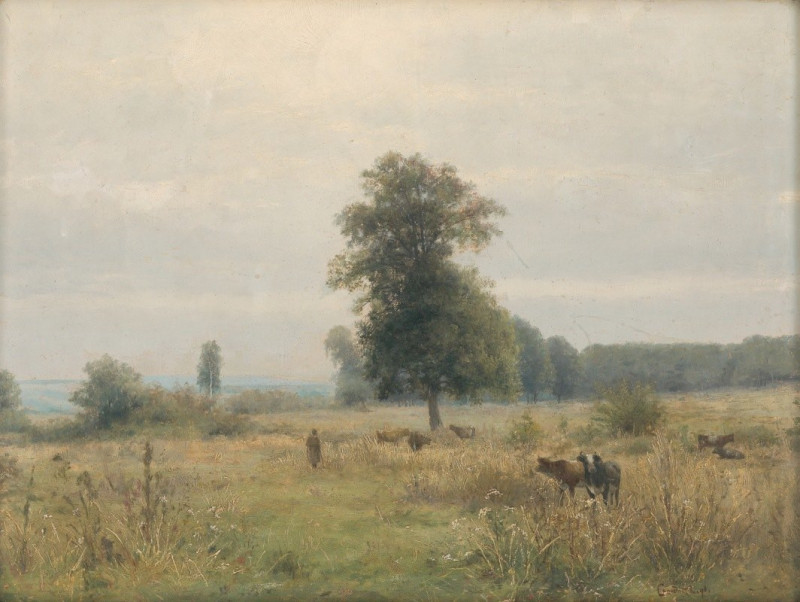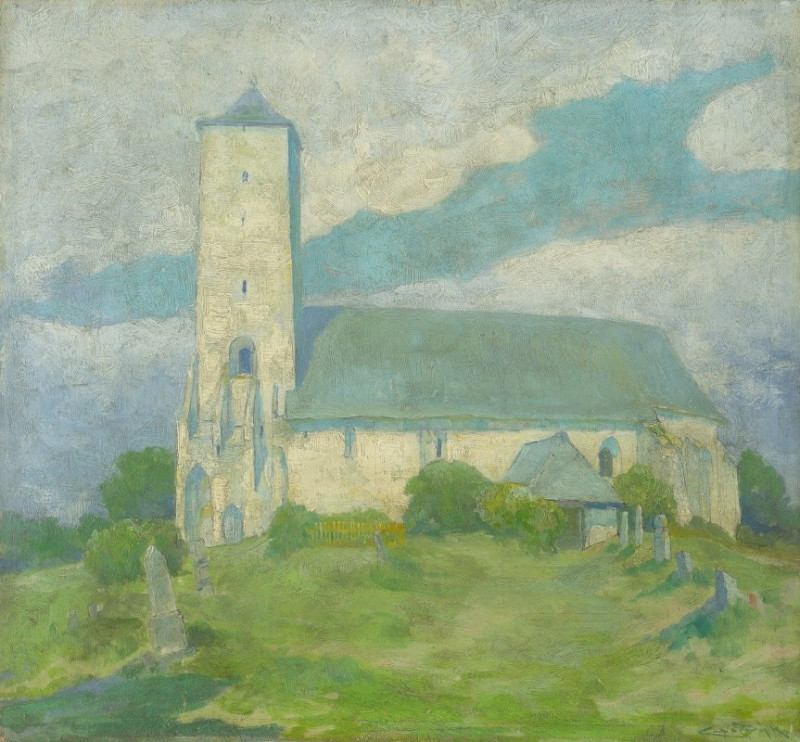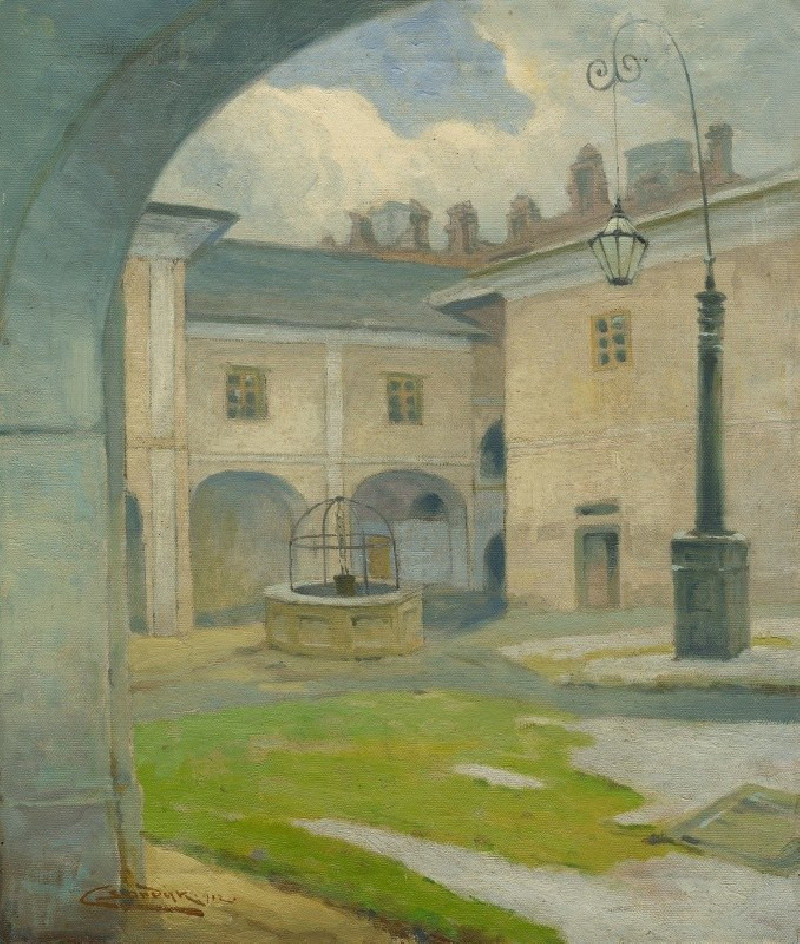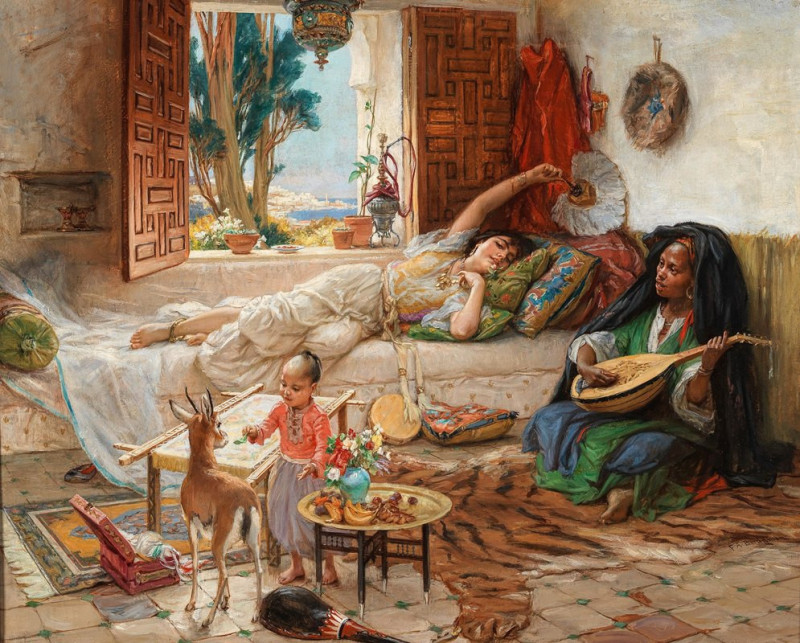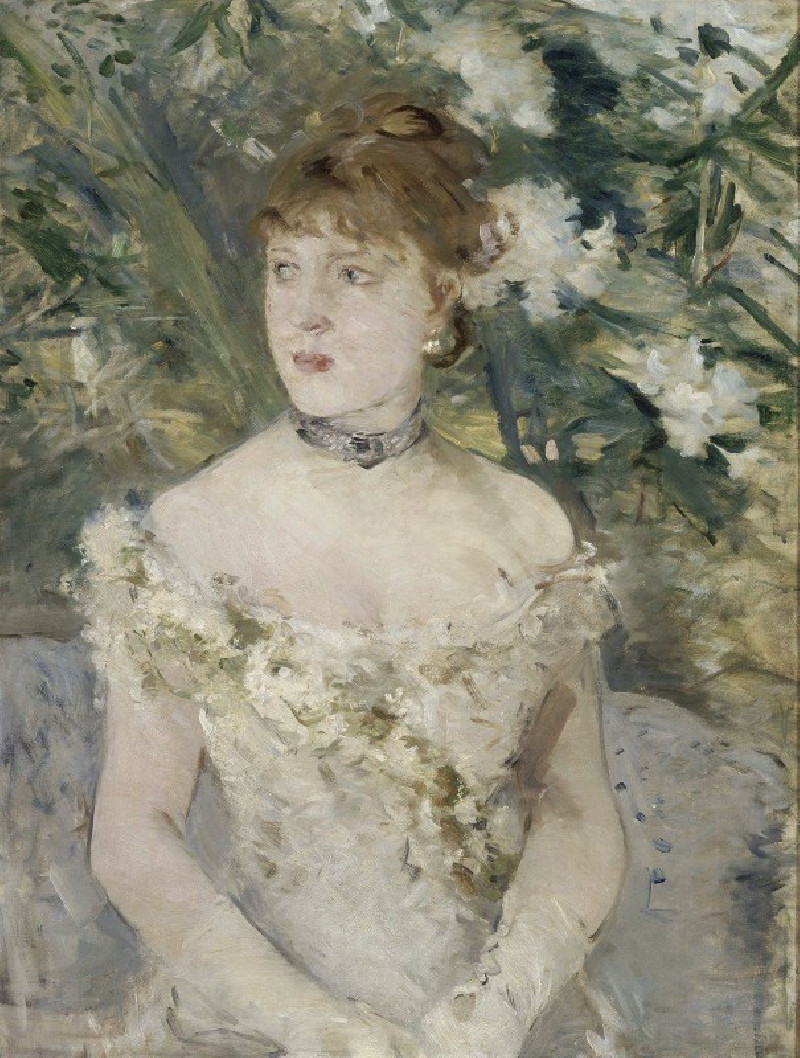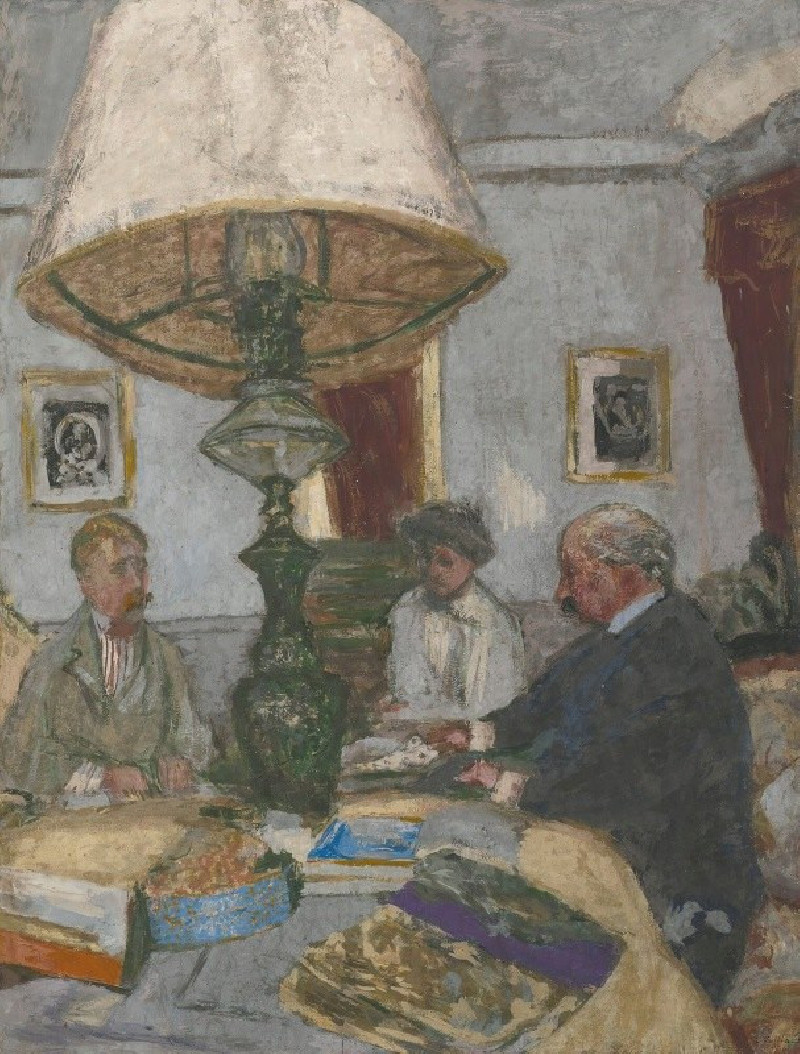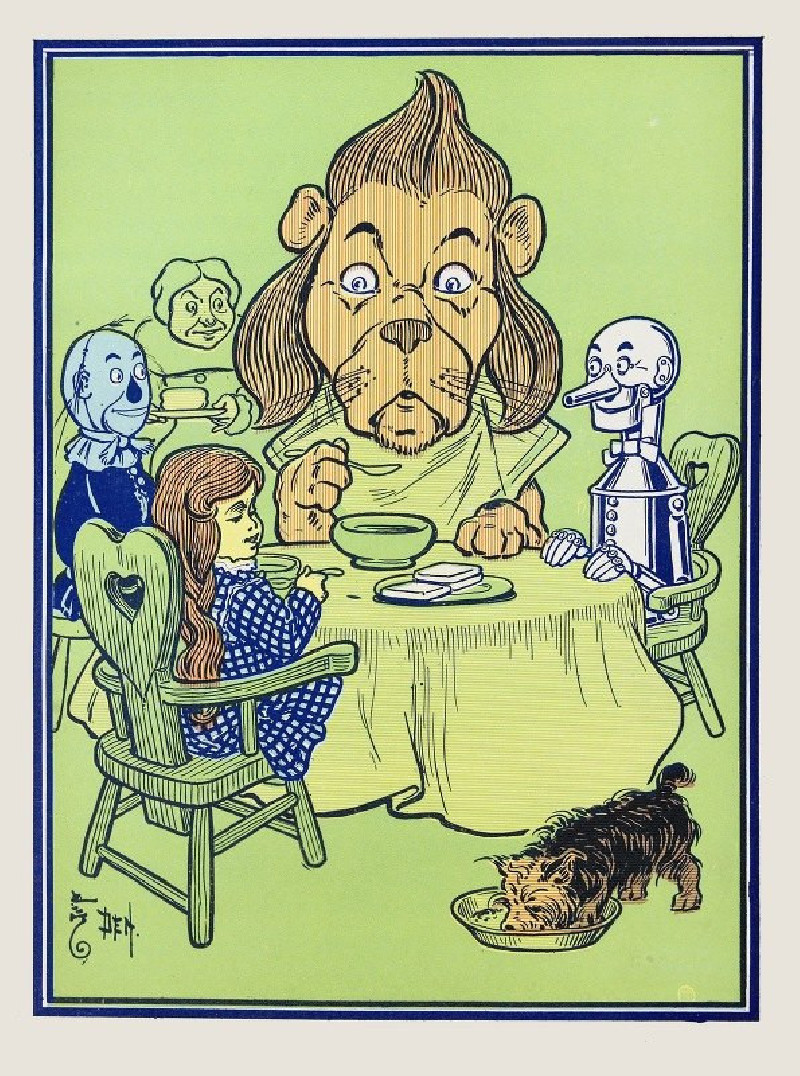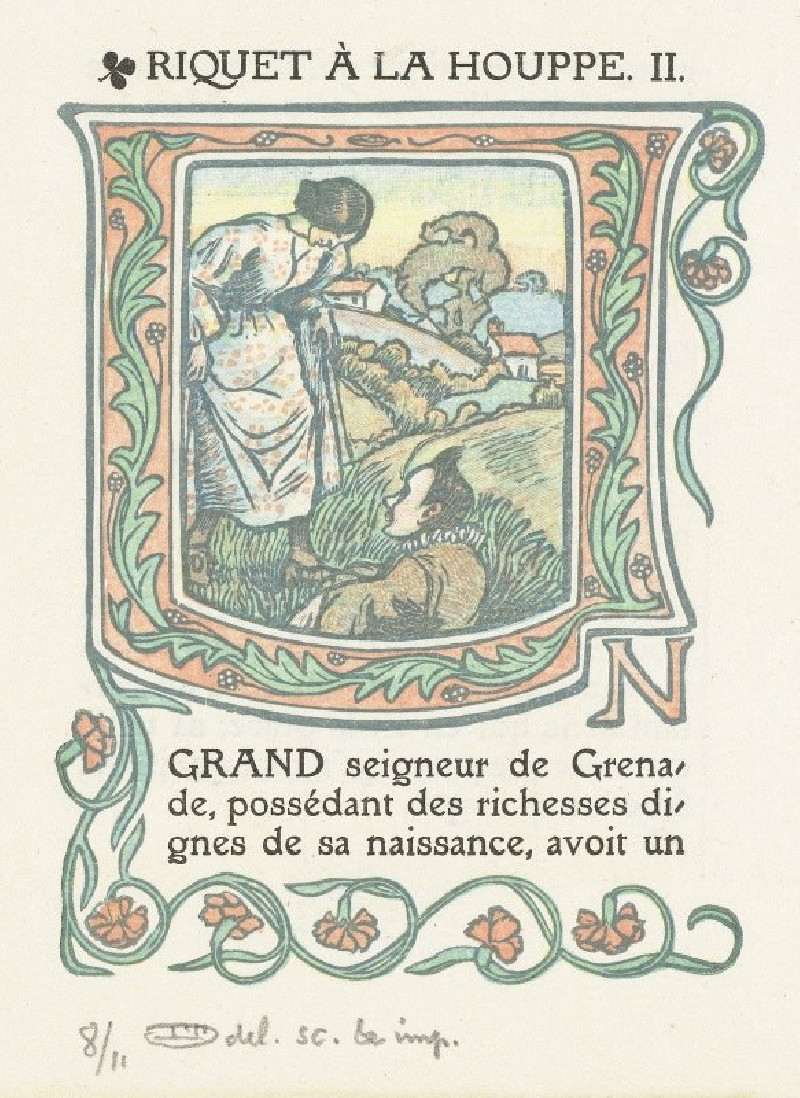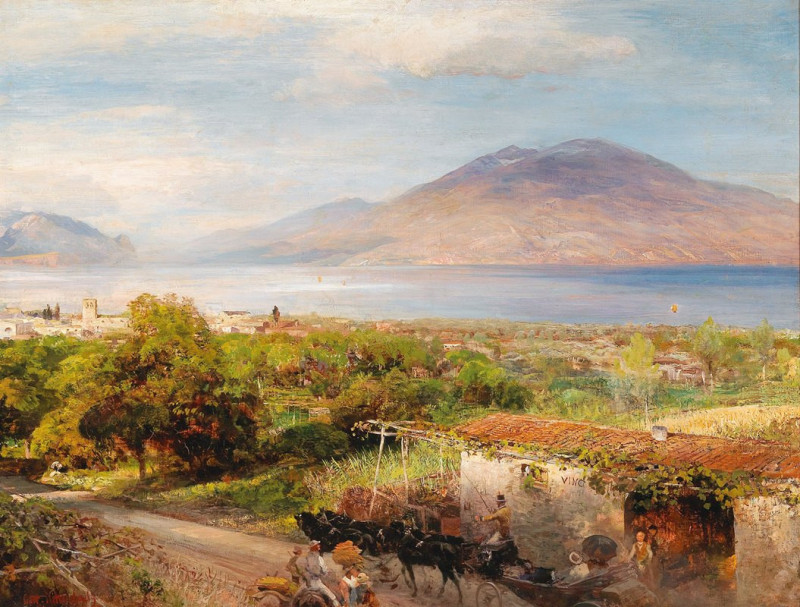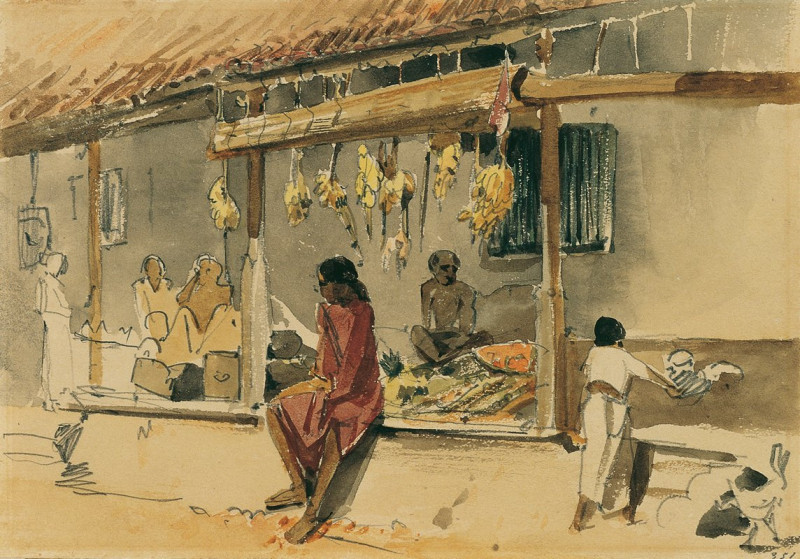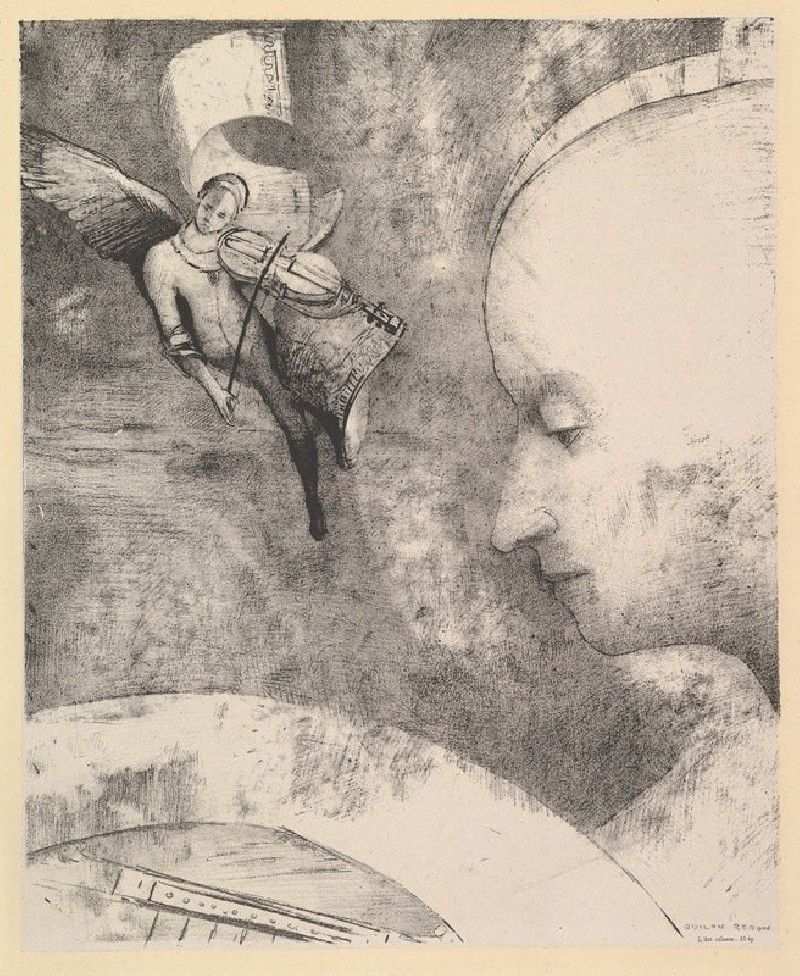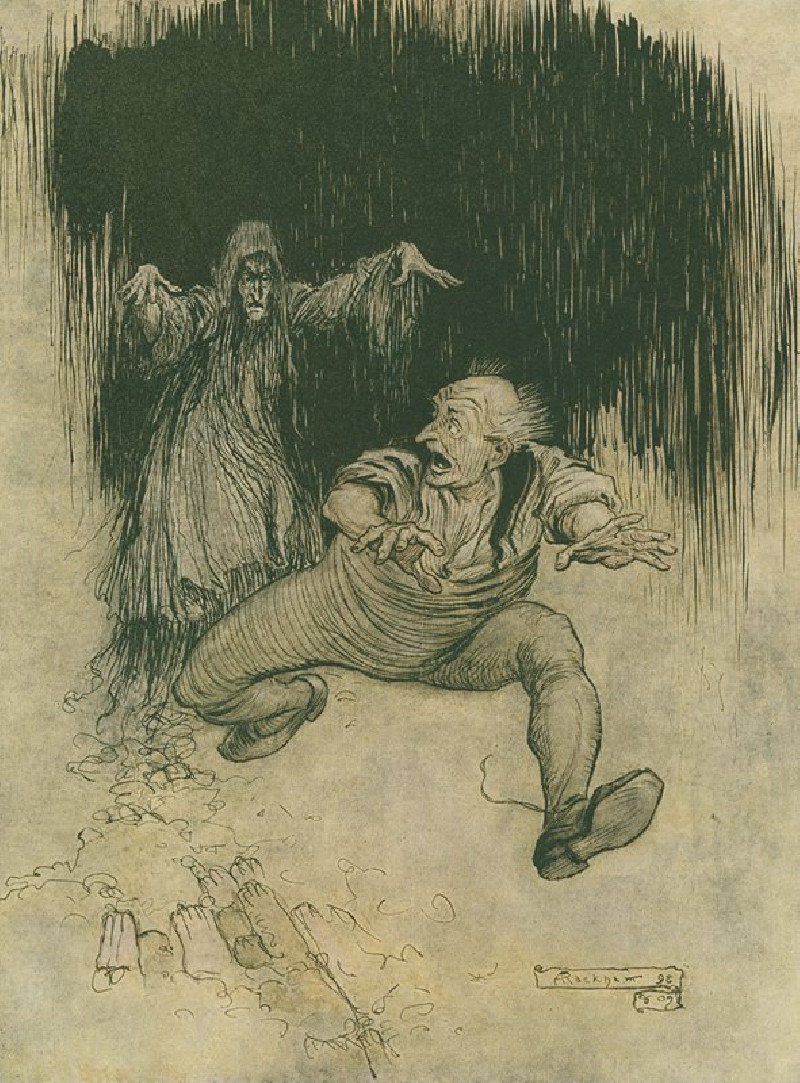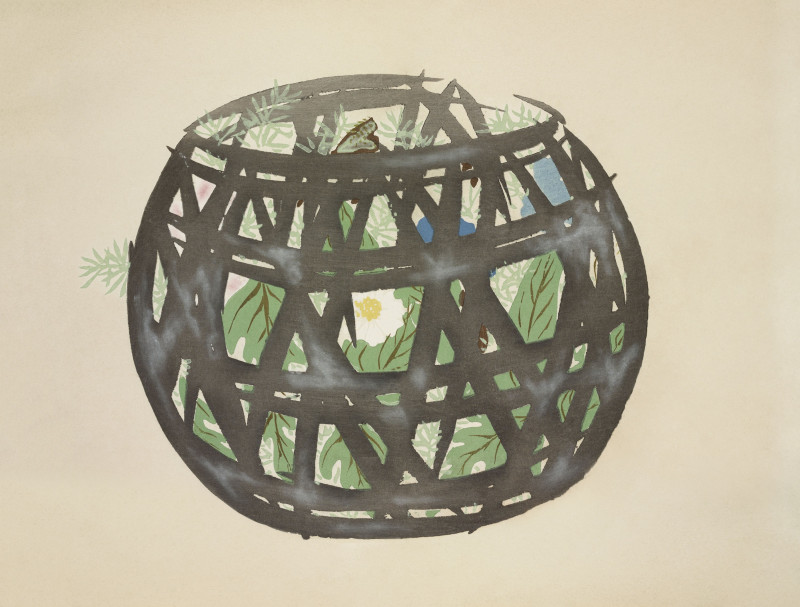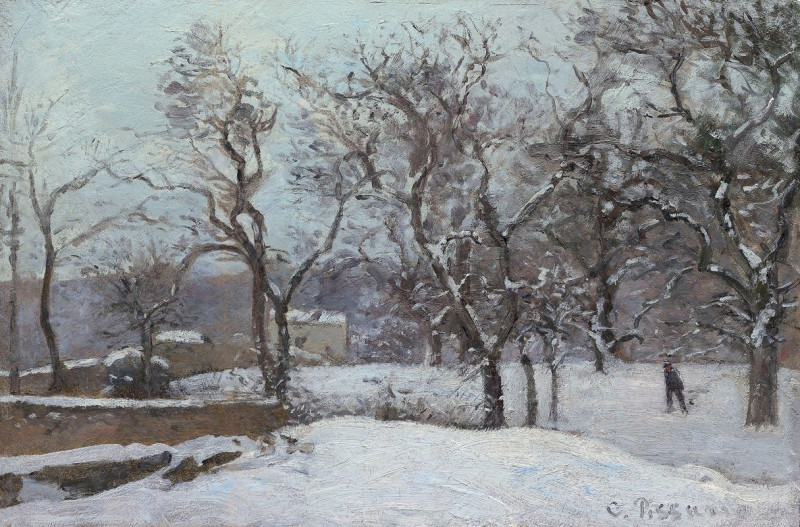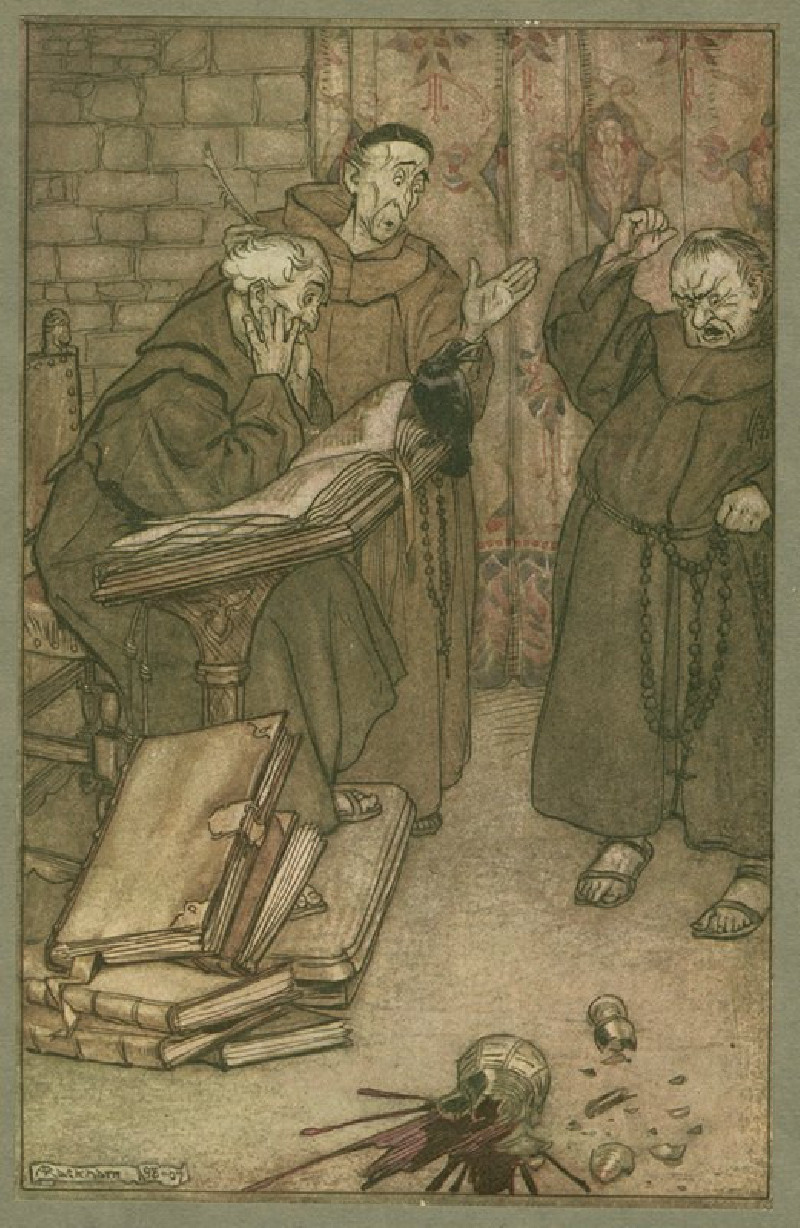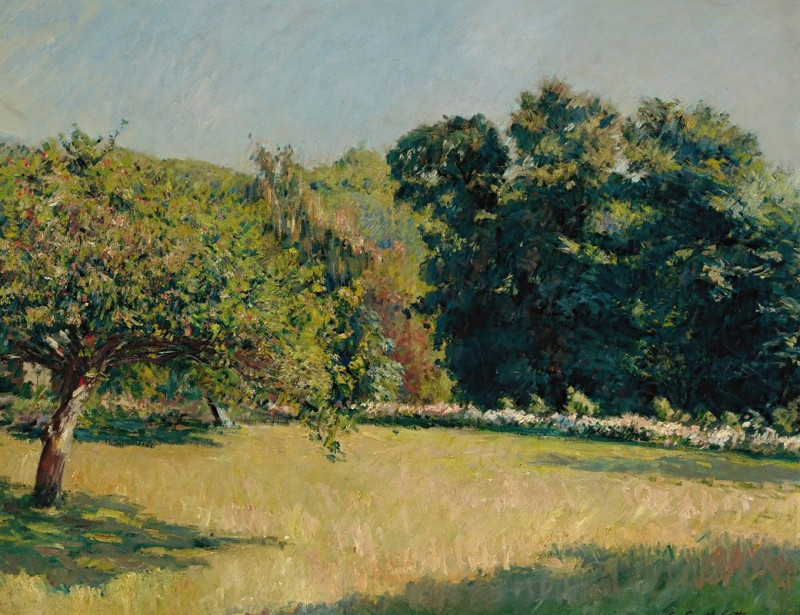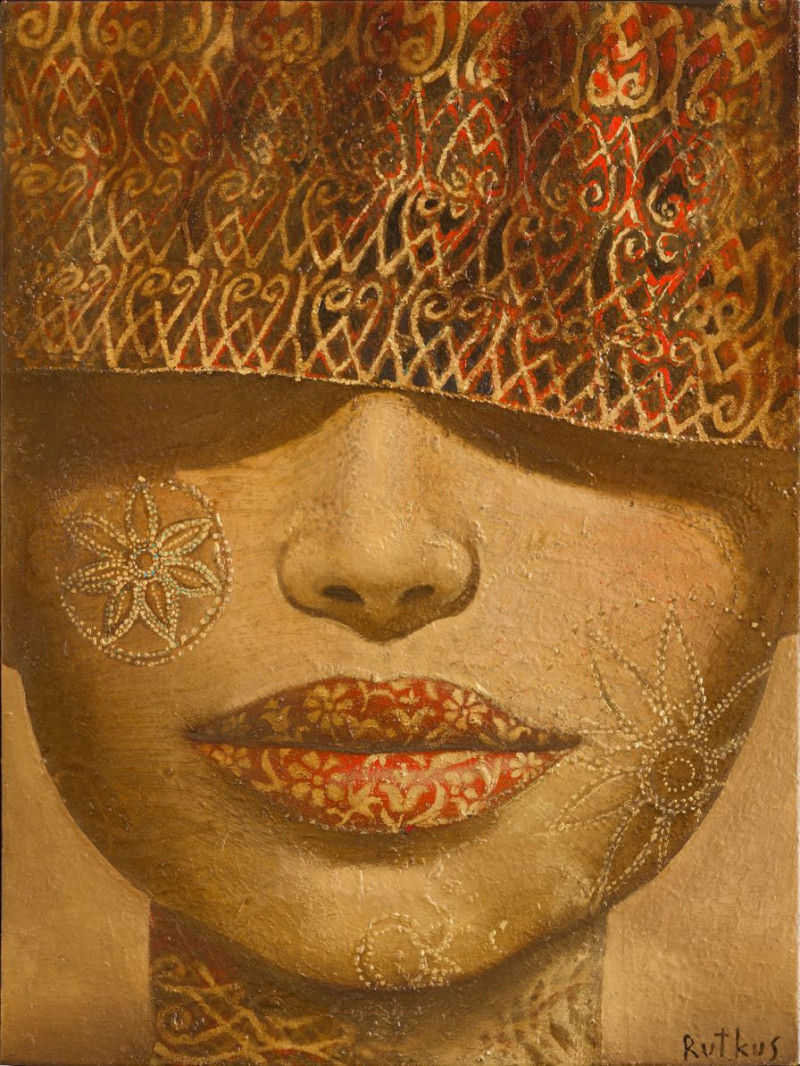Zvážanie sena (1905–1915)
Technique: Giclée quality print
Recommended by our customers
More about this artwork
Ľudovít Čordák’s painting "Zvážanie sena," painted during the 1905–1915 period, captures a vivid and pastoral scene of rural life. The work reflects the tranquility and labor of the countryside, emphasizing the connection between man and nature.In the foreground of Čordák's landscape, a hay wagon, heavily laden, is pulled by a pair of oxen along a dirt path. The figures of a man and a woman, small yet integral, accompany the wagon, appearing to be guiding or walking beside it toward their destination. This focal point of human and animal effort provides a glimpse into rural activities, resonating with themes of work and cooperation in nature.Behind this serene activity, the painting unfolds into a rolling countryside that leads to a powerful mountainous backdrop. The mountain, dominating the view, rises majestically under a dynamically painted sky of blues and grays, suggesting the transient light of either early morning or late afternoon.The brushwork on the canvas brings the scene to life with vibrant colors and dynamic strokes—yellows and greens paint the earthy expanse of the fields, suggesting the fertility and continuous cultivation of the land."Zvážanie sena" not only portrays a specific moment of agricultural life but also evokes the timeless and symbiotic relationship between the earth's natural forms and its inhabitants.
Delivery
Returns
Ludwig Deutsch was an Austrian painter who settled in Paris and became a noted Orientalist artist.
Details of Ludwig Deutsch's life are obscure. He was born in Vienna in 1855 into a well-established Jewish family. His father Ignaz Deutsch was a financier at the Austrian court. He studied at the Vienna Academy of Fine Arts 1872–1875, then, in 1878, moved to Paris where he became strongly associated with Orientalism.

